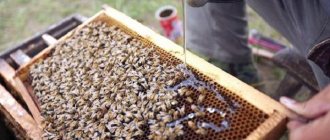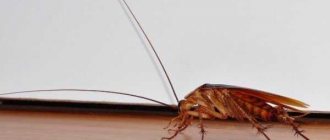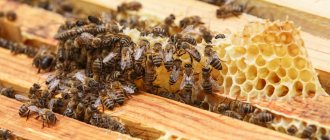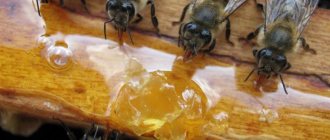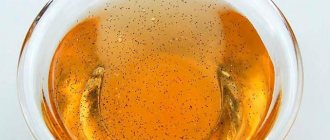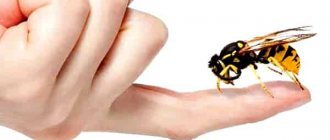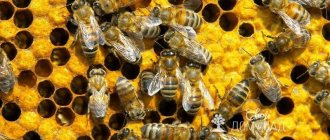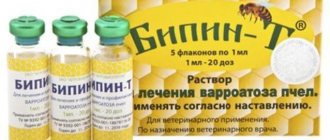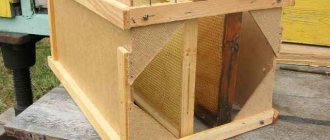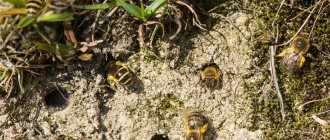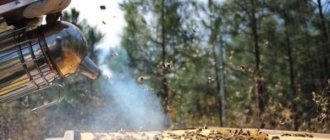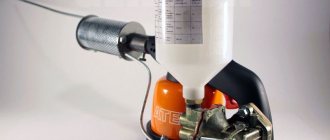In winter, the beekeeper does not need to do a lot of work in the apiary, but some things still have to be done. About once every week or two, a good owner enters the winter hut and checks the condition of the hives. This is done by ear, sometimes using a stethoscope (human or a special bee one, called an apiscope) or an ordinary rubber tube, one end of which is applied to the hole and the other to the ear. If the bees hum steadily and quietly, everything is fine. But if the insects buzz a lot or, conversely, do not show signs of life, you urgently need to find the problem and solve it. Bees may be bothered by:
- Crystallized honey that is impossible to eat.
- Honeydew honey, which causes diarrhea.
- Lack of feed.
- An uninvited guest in the hive (mouse, marten, two-tailed birds), etc.
The problem with feeding bees is the simplest and can be solved in a couple of hours. Thick fertilizers - the so-called kandi - are especially effective for this.
What is Kandy
What is kandi for bees? This is a special carbohydrate supplement, which is a dough made from powdered sugar and honey, sometimes with other additives. Honey kandi is formed in the form of flat cakes (thickness - 2-3 cm, weight - 1 kg) and placed on top of the frames in plastic bags, gauze or parchment paper so as not to dry out. You can give kandi to bees at least every month if they have no other winter supplies. You can buy ready-made kandi, or you can make it yourself. We will tell you how and when to feed Kandy bees, as well as types and recipes for this useful feeding.
Feed selection
In most cases, feeding bees in winter is a direct cause of deterioration in living conditions and maintenance in the entire hive. Ideally, the last feeding should be carried out in early September. By this time, the bees have time to fly around and are already beginning to prepare for winter. However, sometimes unforeseen circumstances arise when fertilizing is considered rather as an exception to the rule. Initially, you need to decide which families you will feed, and then place them closer to the exit in your winter hut.
You will have to be as scrupulous as possible when it comes to choosing food supplies. The food should not disturb the bees or cause digestive upset. It must also be given with extreme caution so as not to disturb the hive and prevent the bees from flying out.
In most cases, bees are fed for the winter with thick feed. They can be used in almost all wintering conditions. Some of the most common types of food are fudge, candy, or poop dough.
Let's look at the main types of fertilizers, how to prepare and use them correctly.
Varieties of Candy for Bees
The recipe for a typical kandi diet includes sugar and honey, a drop of acetic acid for easier breakdown of carbohydrates, and a couple of tablespoons of water. To prevent diseases, you can add medicines (mycobanosis, nosemate, nosemacid) or pine infusion/decoction to the finished candy.
Remember that the carbohydrate feeding of Kandy bees must turn into protein-carbohydrate feeding by spring, otherwise it will be difficult for them to raise young animals. To do this, add to the dough:
- Flower pollen (crushed pollen - this beekeeping product is the first in protein content),
- Yeast (brewer's or baker's),
- Milk (only cow's milk, can be in dry or liquid form),
- Egg (chicken, one per family),
- Flour (soybean and cottonseed).
All dry ingredients should be ground very finely (the finer the better).
You cannot add fruit or tree (birch, maple) juices to the Kandi food for bees, as they are too acidic for bees and contain a lot of indigestible substances.
Medicinal supplements
Whatever kandi recipe you choose, the base will always be the same - honey and sugar.
Then the beekeepers decide for themselves whether to prepare regular feeding or medicinal feeding. It depends on what you add to the honey dough.
As a result you can get:
- Regular kandi without additives. Just good feeding.
- Medicinal, with nosemate. I think you guessed by the name that this is a preventive remedy for nosematosis.
- With the addition of bee pollen - to restore carbohydrate and protein balance.
- With thymol (thyme) - for the treatment of nosematosis and various foulbroods. An excellent alternative to nosemate.
- To strengthen the immune system, add tinctures of mint or St. John's wort.
All supplements must be strictly dosed. Otherwise, any medicine turns into poison. Properly prepared feeding in compliance with all proportions specified in the recipe helps the rapid recovery of insects after wintering and prevents the appearance and spread of diseases in the apiary.
Helpful advice : if you decide to add medications to bee food, do it at the very end of preparation, since prolonged heating can cause a change in their properties.
Kandy for bees - beneficial properties
Honey kandi is a very successful way to replenish winter supplies. Compared to sugar syrup, the features of honey-sugar cakes make it a more attractive feeding option:
- does not excite the bees : the queens mate no earlier than expected, the bees will not raise brood prematurely or try to fly out for a bribe;
- can be stored for a long time in an airtight container in the refrigerator, so this fertilizer can be prepared in advance and then used throughout the winter;
- convenient to feed : minimum disturbance for the bees; it will not leak or flood the hive and its inhabitants, as sometimes happens with sugar syrup.
In addition, unlike candies, fudge and other fertilizers that need to be brought to a boil, candy for bees does not heat above 60°, which means there is no risk of poisoning our workers with burnt sugar, which contains a lot of hydroxymethylfurfural and other carcinogens.
There really aren’t that many basic Kandy recipes, but every beekeeper probably has his own secret ingredients. Let's see what this useful bee food is mainly prepared from.
General tips and tricks
- Fertilizing in the winter hut should be carried out only at temperatures not lower than 2 degrees Celsius. This is the extreme bottom bar. At even lower temperatures, the bees simply will not take food.
- If feeding is difficult due to low temperature, it is necessary to move the selected families to an insulated room with a temperature of about 25 degrees. With such an increase in temperature, the bees quickly become more active and take food in full. In this case, the upper and lower tapholes must be temporarily opened during transfer. The transferred families keep their bags warm, after which they carry them back to the winter hut and bring the next family.
- From hunger, bees may freeze and show no signs of life. If only a couple of days have passed since then, they can be revived. To do this, you need to bring the family into a well-heated room, open the hive and sprinkle the liquid on the bees sitting and lying on the bottom. After this, you need to install a couple of honey frames in the hive and leave the bees alone. After just a few hours, the bees become more active, begin to buzz and eat food. After this, the hive can be transferred back to the winter hut and the entrance can be opened.
- Feeding bees with honey in winter must follow strict rules. Both in terms of preparation and in terms of serving. The wrong approach can cause the death of an entire family in a fairly short period of time.
- If you observe anxiety in one of the colonies, or all bees have digestive problems, it is recommended to temporarily place the entire hive in a heated room, check the condition of the food being used and, if possible, eliminate the source of the problem. Sometimes it becomes necessary to transplant the entire family into a new hive and move it back to the winter hive.
- Any work in winter associated with the opening of the hive always negatively affects the condition of the entire club. Therefore, they should only be carried out if absolutely necessary. If the temperature in winter huts drops below zero or the bees are kept free in the winter, they must be left alone until the weather warms up. They need peace.
Simple kandi recipe
According to Soviet standards (TU 10 RSFSR 339-88), kandi for bees should consist of:
- 73.8% powdered sugar,
- 26% honey,
- 0.18% water,
- 0.02% vinegar.
Honey should be dissolved, that is, liquefied in a water bath (a saucepan with honey is heated in a saucepan with water to 45-60o, that is, until steam appears or when it is hot to touch the contents with your finger). Powdered sugar can be made from regular sugar by grinding it in a coffee grinder. The ideal GOST grinding is 0.2 mm. At home, the main thing is uniformity and the absence of large unground particles.
The recipe for making kandi is simple: pour the powder directly into honey heated in a water bath, mix with your hands and place portioned cakes in plastic bags.
Kandi recipe for bees with inverted sugar
You can cook kandi with invert sugar (glucose and fructose syrup) instead of honey, then the proportions of the ingredients will be as follows:
- 70% powdered sugar,
- 29.8% invert sugar,
- 0.1% water,
- 0.03% vinegar.
What is invert sugar? This is a product made from regular sugar (they put it in tea at home). Heat and acid (citric acid) are used to break down sugar into glucose and fructose, which changes the texture, taste and shelf life of foods prepared with such sugar.
Sugar can be inverted at home using 0.5 part water (to 1 part sugar), citric acid and boiling, but if the syrup burns even a little, it should not be given to bees.
Kandi recipe with flour for bees
Soy and cottonseed flour contain more protein than any other types of flour (wheat has none at all). This, of course, will not replace a mixture of honey and bee bread, which is considered the ideal natural food for the young spring generation of bees, but it will be much better than just carbohydrate cakes, which have no protein at all.
The proportion of flour in kandi is no more than 10-15% of the total mass of the dough. She gradually mixes in the dissolved (warmed up) honey, then powdered sugar is added, the dough is kneaded until hardened - and you're done! If you pre-boil the flour in a small amount of water, it will be easier to digest (and vinegar helps digest sugar).
Sugar fudge
To make fudge, you only need 3 ingredients: honey, powdered sugar, water. Clean water is poured into an enamel pan and heated. Upon reaching 60C, add sweet powder to hot water, boil for 20 minutes, stir thoroughly. The lumps need to be dissolved and the foam removed. The degree of readiness is checked by lowering the spoon first into the hot syrup, then immediately into cold water. A thickened, quickly separating mixture is an indicator of the readiness of the candy. If the composition turns out to be liquid, you need to continue boiling until ready. The finished product is boiled for another 3 minutes with 600 g of honey of unsolid consistency. If the sweet fudge is ready, cool it, stirring with a wooden spoon (a must!), the mass gradually lightens, acquiring the necessary density and viscosity.
Kandi recipe for nosematosis
Unfortunately, every beekeeper knows what nosematosis is. To help our bees cope with this disease, thymol and wormwood tincture are added to ordinary kandi:
- 3 grams of thymol per 10 kg of feeding;
- wormwood tincture 1 tablespoon per 1 kg.
You can also use special medications - “Nozemat” or “Nosemacid”. Instructions for use should be in any honey. drug. We think there will be no difficulties with this.
The Kandy recipe with wormwood and Timol, in our opinion, is one of the best options if you prefer folk remedies. Thymol is found in Thyme essential oil and Thyme oil. Or you can buy it already in powder form. Wormwood tincture can also be easily found in a pharmacy.
Main types of feeding
The classification of Kandy is based on what additives are used. Let's get acquainted with the main types.
Table. Main varieties of Kandy.
| Name | Short description |
| Without additives | Everything is clear here - no additives are used in feeding. |
| With cobalt chloride | This feeding is used to increase the carbohydrate/protein reserves of insects, as well as to accelerate the synthesis of cyanocobalamin. |
| With pollen | Feeding with crushed pollen is characterized by a maximum protein content and is intended to restore the protein/carbohydrate balance. In cases where the supply of nectar is impossible due to bad weather or there are simply no flowering honey plants, it helps in raising brood. |
| With herbal tinctures | For preparation, plants such as St. John's wort, calendula, mint, etc. are used. An excellent way to strengthen the immunity of bees. |
| With nosemate | We are talking about a special drug that contains antibiotics. With the help of this candi, nosematosis is treated. |
| With thymol | It is used for the prevention of various diseases, including nosematosis, as well as foulbrood diseases, ascopherosis. |
| Fortified with protein | Designed to replenish reserves with the onset of spring. |
| Energy | Such feeding, as you might guess from the name, restores the vitality of insects after wintering. |
There are different types of kandi
Important ! Ultimately, in the spring you will get healthy “young growth” and healthy bees.
How to make kandi for bees at home
Cooking kandi is not a complicated procedure. It can be done at home. Let's say more - if you decide to buy Kandy, then in our opinion, this is a step of desperation. Or the result of a catastrophic lack of time (the reasons may be quite valid).
What do we need? You only need a minimum of 2 ingredients: honey and powdered sugar. Kandi recipes such as Komarov's mass and Scholz's mass use a sugar to honey ratio of 2.5:1. The difference between them is only in the heating temperature: 40° in the first case and 60° in the second. For an even thicker composition, take a ratio of 1:3 or 1:4 if there is a risk of liquefying the cake (warm winter, high temperature in the winter hut). Ready-made Kandi flatbreads crumple well, do not stick to your hands, but leave a small film on your fingers.
Step-by-step preparation of kandi for bees
To prepare such feeding for one bee colony for 1 month:
- Take 250 g of honey (preferably natural, light honey - it almost does not crystallize).
- Pour into a saucepan or metal cup (non-oxidizing, that is, not aluminum or cast iron; stainless or enameled will do).
- Place in a water bath (in another saucepan with water). You can simply heat the honey on the stove, but the good thing about a water bath is that even if you get lazy and the water boils, the honey will definitely not burn.
- Heat to a temperature of no more than 60o (steam will appear - turn it off immediately!).
- Take 750 g of sugar (selected, not wet, not lumpy, without impurities).
- Grind in a coffee grinder as finely as possible.
- Mix with honey.
- Add a drop of vinegar and a spoonful of water.
- Knead the dough with your hands and form a flat cake 2-3 cm thick.
- Place in a plastic bag.
Kandy is done! You can give it to bees!
How to feed Kandy bees
How to feed Kandy bees?
Just place the tortilla on the frames. Then the bees will do everything themselves. This bee food is placed on top of the hive directly on the frames. It is always warm in the upper part, so the flatbread will not freeze, and besides, it will be accessible from any streets below and even from the side. There are 3 main materials in which candy is wrapped for bees to prevent the feeding from drying out and falling out:
- a plastic bag with small holes (if you take a packaging bag, there are holes there initially);
- multilayer gauze;
- parchment paper – you also need to make holes in it.
3-5 kg is enough food for one family of bees for the winter. If you are preparing a lot of candy at once and storing it in the refrigerator, warm it to at least room temperature (or better yet, body temperature) before adding it to the hive. For medicinal purposes, bees are fed with honey and powdered sugar in doses 1.5-2 times less.
To prevent the fertilizing from crystallizing, there must be a positive temperature in the winter hut.
Feeding
The feeding time is chosen according to the climate of the region. Experienced beekeepers advise calculating the laying approximately 2 weeks before the first flight, if the weather does not make adjustments. If the climate is warm and the bribe was carried out late, additional feeding will not be necessary.
Beginners and inexperienced beekeepers do not always correctly determine the need to add candy. You need to listen to the sounds from the hive: if a muffled rustling is heard from there near the wall, the food is running out, the bees are moving in search of food. You can carefully shine a flashlight with a red lamp into the hive (ordinary lighting irritates the family, especially if the bees are in a calm state).
When to feed Kandy bees
How often and when to feed bees depends on the time of year: Winter feeding of bees is done as needed: 1 kandi cake is usually enough for a month. Insects need to be disturbed as little as possible, so if, when you lift the lid, you find a half-eaten cake, do not leave it for another week - replace it with a fresh one and feel free to close the bees for the winter for another month. In the spring, it is recommended to feed (and not just carbohydrate feeding, but with the addition of proteins) more often - once every two weeks - or increase the portions, since in connection with the hatching of the young, the bees eat 2-2.5 times more.
And another useful video about the varieties of kandi and its properties:
